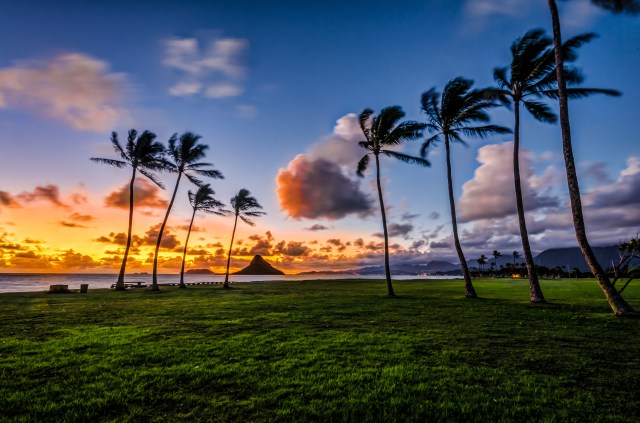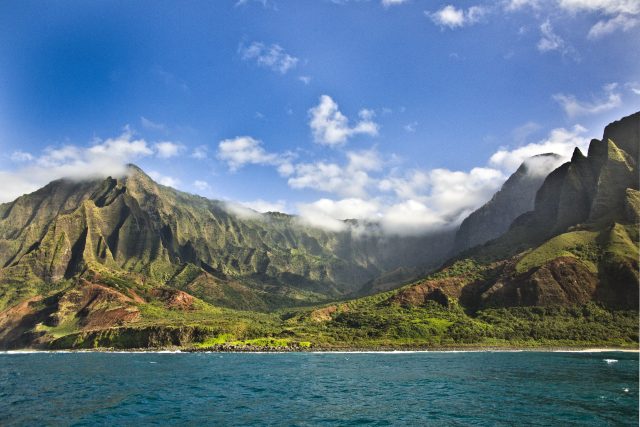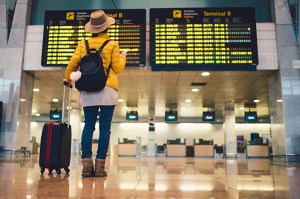The first World Ocean Day was introduced in Rio de Janeiro on June 8, 1992, and just over thirty years later, World Ocean Day is still a day centered around educating and motivating people on caring for and acting in service of the world’s oceans.
The 2023 World Ocean Day is all about supporting the 30×30 goal, which is the commitment to protecting 30% of the world’s lands, waters and oceans by 2030. At the United Nations Convention on Biological Diversity in December 2022, the 30×30 commitments were announced, and it’s a worldwide movement that you can be a part of.
Supporting habitat conservation and restoration, understanding the impact our actions have on the ocean and valuing the role nature and the ocean play in our lives are important ways each of us can help support the 30×30 goal. It can sometimes be easier to care about the nature that surrounds us and that we see every day, but it’s important to remember that caring for the planet can and should extend to our vacations.
Hawaii is a hugely popular tourist destination thanks to its natural beauty. But tourism can come at a cost, and there’s the potential to make the land and ocean around Hawaii a little bit worse for having visited. Flip the script and make Hawaii better because you decided to visit. Here are some ways to do that, including volunteer opportunities, reef-safe sunscreen and five hotels across the islands that are dedicated to sustainability. Each way brings us one step closer to the World Ocean Day goal.
Volunteer on Vacation, Get a Free Night’s Stay
“Malama”in Hawaiian means to care for, preserve and protect. The Malama Hawaii Program, launched in 2021, gives tourists opportunities to give back and care for Hawaii and come away feeling more connected to its natural beauty and culture. Plus, in exchange for volunteering just a couple hours of your time on your Hawaiian vacation, you can get perks like a free night’s stay or a resort credit at participating hotels across the islands.
The program has plenty of options for everyone’s interest, especially those who are passionate about the ocean. Help restore native Hawaiian fishponds with the Malama Loko Ea Foundation. Take the Malama ka Aina tour at Kualoa Ranch (which you may recognize from the “Jurassic Park” movies) and learn more about the area’s ecosystem from the mountain to the ocean, and help harvest taro or thatch a roof on a traditional Hawaiian house. Or grab a bucket and some gloves and help clean up the beach; you can choose to get your supplies from one of the participating hotels and visit the closest beach, or you can join a group event, like those hosted by Maui Ocean Center or Kauai Surfrider Foundation.
5 Hawaiian Hotels Going Above and Beyond for the Planet
Choosing where to stay is also a way that you can help support ocean conservation. Get to know five of Hawaii’s top hotels with robust sustainability efforts in place.
All 1 Hotels are committed to sustainability, LEED-certified and all of its U.S. properties are carbon neutral. This includes 1 Hotel Hanalei Bay on Kauai’s North Shore, just opened in February 2023. The design of the hotel echoes the natural beauty of Kauai, which is a high bar. The organic rooftop garden provides the freshest ingredients to the restaurants and helps keep the building cooler, reducing the need for air conditioning.
Moana Surfrider, a Westin Resort & Spa on Oahu, was Waikiki Beach’s first hotel, opened in 1901. Its location on the beach is unsurpassed, but it’s not just a beautiful luxury hotel with amazing views. The LEED-certified hotel has been recognized for its sustainability practices, including reducing energy and water usage, recycling everything from cooking oil to paper to cardboard, composting food and landscape waste, and avoiding aerosol cleaning products.

On the island of Hawaii, the AAA Five Diamond Desginated Four Seasons Resort Hualalai has partnered with the Hawaiian Legacy Reforestation Initiative to plant over 50,000 indigenous koa trees. Koa wood has traditionally been used by Hawaiians to build things like surfboards, outrigger canoes and ukuleles. The hotel sources much of its food from local providers. There’s also a garden and oyster pond on-site that helps supply the restaurants, and food waste is given to local pig farmers. It also hosts beach clean-ups, avoids single-use plastics and has on-site marine biologists to teach visitors about the unique pond and ocean ecosystem at the resort.
Oahu’s North Shore, known for its big waves during the winter, is home to Turtle Bay Resort. It has a solar roof on many of its buildings, and native plants make up much of the landscape. Recycling is mandated across the resort, much of the used cooking oil is converted to biodiesel and any landscape waste is mulched or composted. The resort also treats its own wastewater, which cuts down on the need for freshwater, and uses saltwater-tolerant grass on its golf course. If you want to volunteer during humpback whale season, between November and April, you can help count humpback whales off the coast for Turtle Bay’s partnership with NOAA.
AAA Four Diamond Hyatt Regency Maui Resort and Spa on Ka’anapali Beach is a LEED gold-certified property and has worked to reduce water and energy consumption and boost its renewable energy usage with solar panels. It’s another hotel that gets old cooking oil turned into biodiesel and food waste donated as pig food to local farms. When the humpbacks make their way to Hawaiian waters, educational sessions teach guests about the whales and the importance of protecting their ocean home.
Check Your Sunscreen
Wherever you decide to stay and whatever you decide to do in Hawaii, make sure you’re not harming the ocean with the sunscreen you’re using. Hawaii has banned the sale of sunscreens that contain the chemicals oxybenzone and octinoxate, which have a negative impact on coral reefs as well as the overall marine environment.
Some local ordinances ban any non-mineral sunscreens, including Maui and Hawaii counties, so make sure to bring mineral sunscreen with you. Mineral sunscreens block the sun with minerals like zinc oxide and titanium oxide.
In case you do forget to pack the right sunscreen, you can find dispensers with reef-safe Raw Elements USA sunscreen on dozens of beaches across Hawaii.
Simple things like taking time to pick up trash on the beach, wearing mineral sunscreen and staying at a place that goes above and beyond for the planet, all add up. Embody the spirit of World Ocean Day throughout the year and help care for and protect Hawaii on your next visit.
Learn how AAA Northeast is becoming more sustainable. Visit AAA.com/ESG to read about our environmental, social and governance initiatives and how we are progressing on these goals.
AAA’s sustainable travel series is written in partnership with Kind Traveler, a women-and-veteran-owned sustainable travel platform empowering travelers to make a positive impact in local communities, and contributing writer, Kristin Conard.














